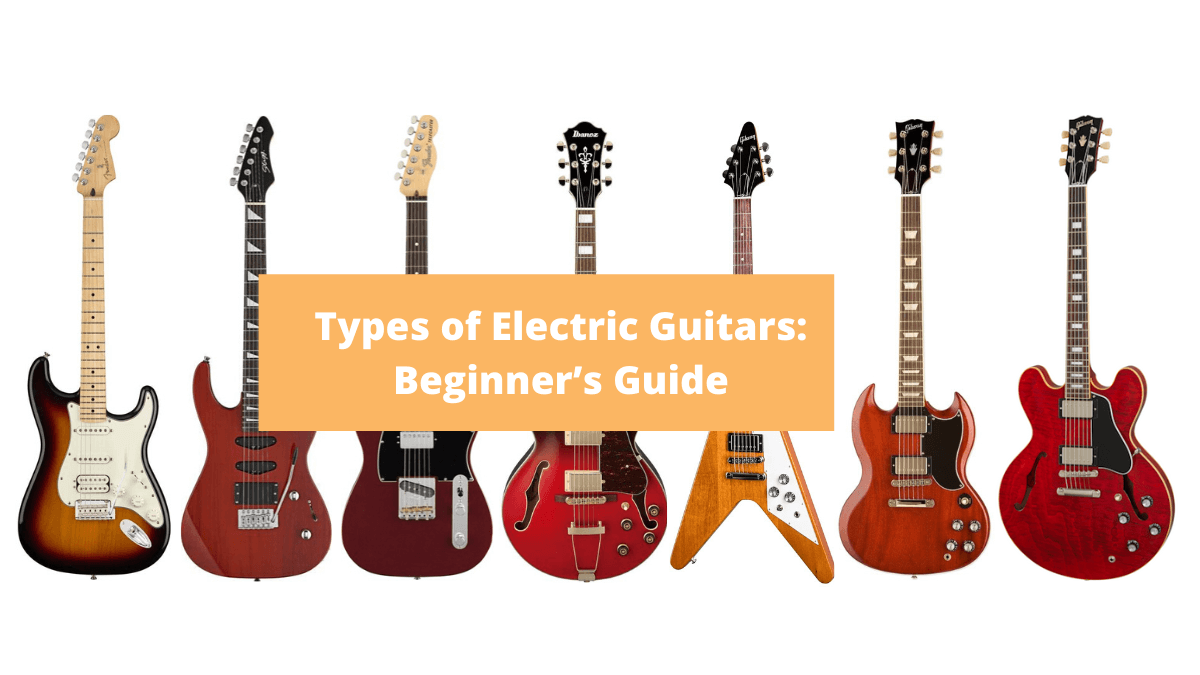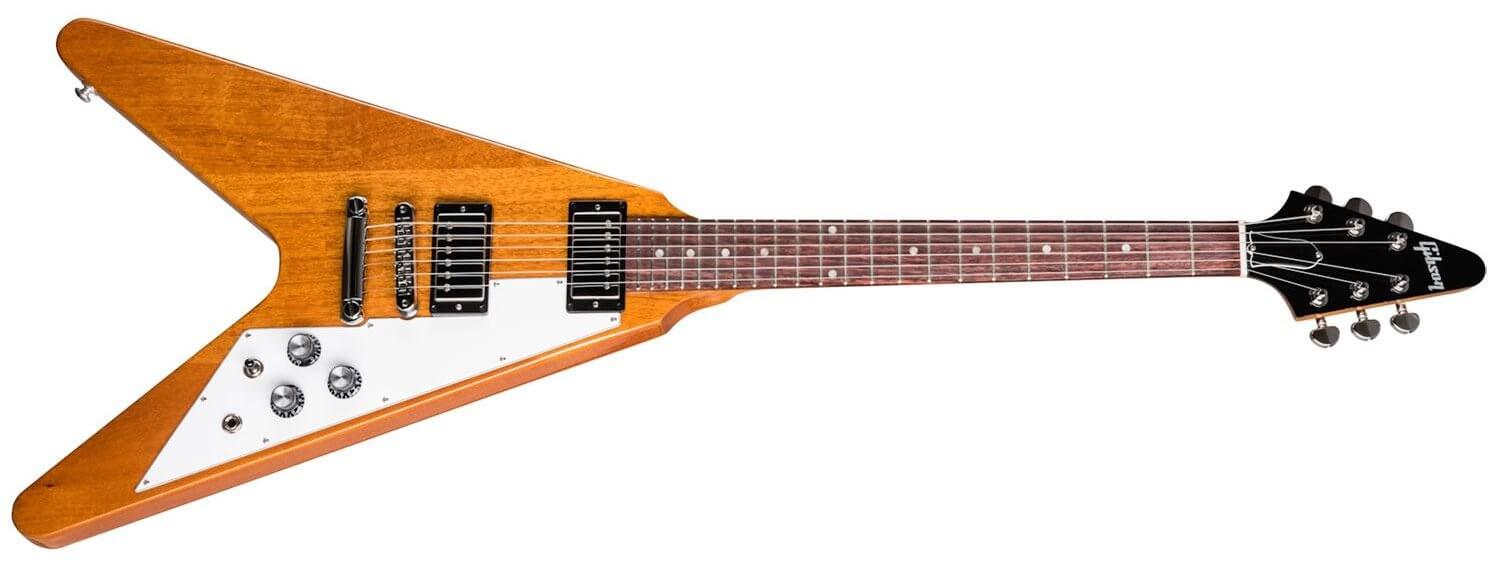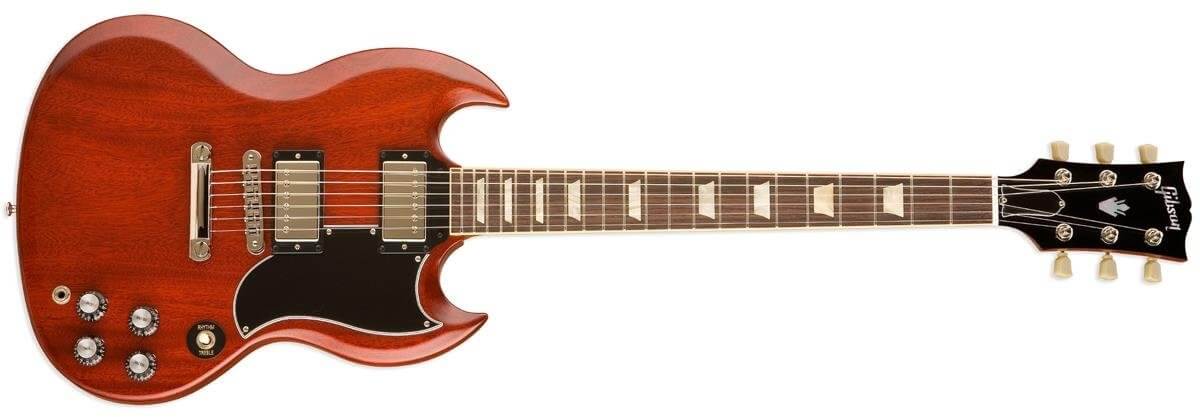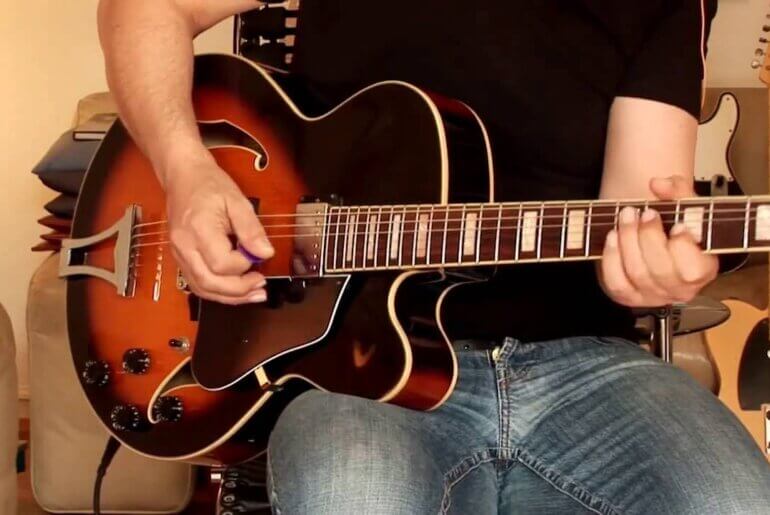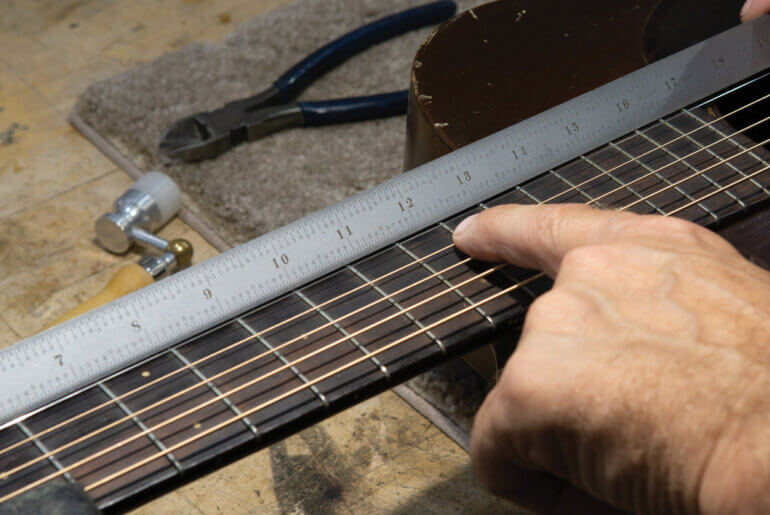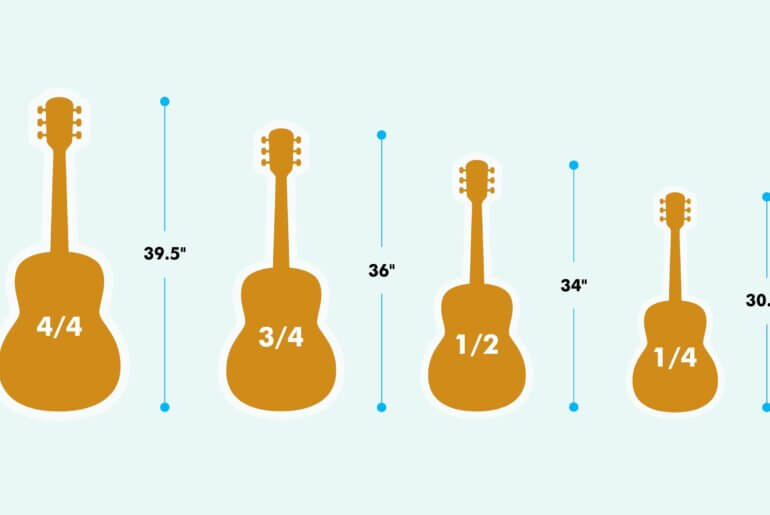An electric guitar is the most common instrument that your eyes would encounter in a band performance. Whether it is an open-air performance or a theatre performance, electric guitar accompanied by keyboard provides strong support to singers. Electric Guitar can be helpful in providing rhythm as well as lead, whenever required. It is because of this flexible characteristic that has made an electric guitar, a must-to-have in a band performance. When an instrument is so popular as much as an electric guitar is, it does attract attention. Hence, classifying these instruments become even more important. Professional electric guitarists from all over the world know about the classification of electric guitar and their application. So, let’s find out what are the types of electric guitars available for guitarists and how these can make their band complete.
Introduction
It is a misconception to believe that every brand and different types of electric guitars offer the same sound. Because of its flexibility, it often becomes difficult to figure out which from the different types of electric guitars is the right choice for your needs. Overall, guitars come in many varieties, each with a unique set of attributes. One of the great things about being a guitar player is that, unlike many instruments, changing your entire sound is as easy as putting down one guitar and picking up another.
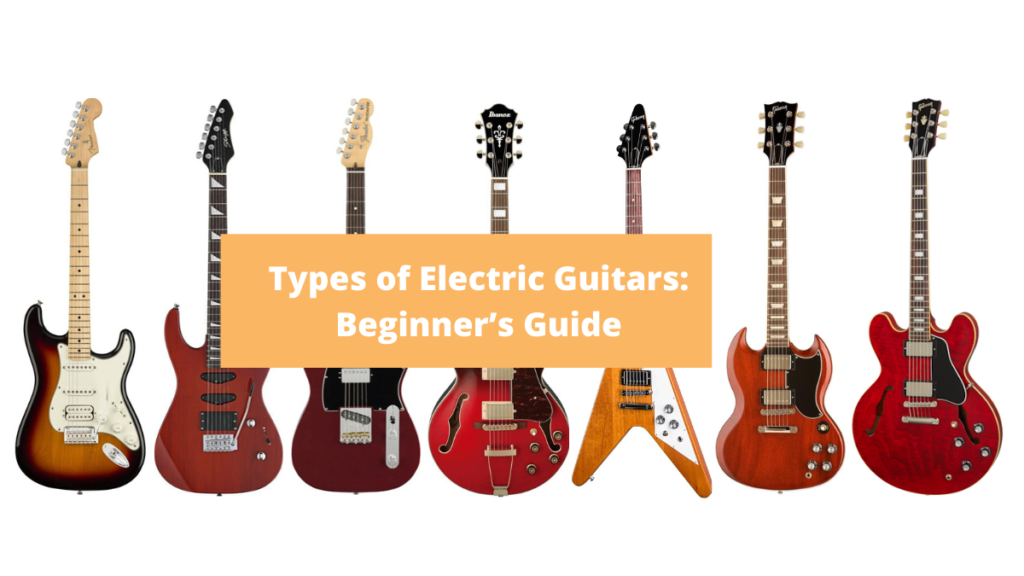
Understanding this guide will get you a step closer to achieving that signature sound all your own. Or, copying the tones of your favorite guitarists. In this guide, we’ll look at the most common styles of electric guitars. But before that, it is even more important to know about what is an electric guitar is. Also, a little bit about a pickup, and an amplifier. So, if you are someone who already knows all that, you might want to skip those sections. You can straightaway move to the classification.
What is an electric guitar?
An electric guitar is a device that relies on electromagnetism to produce sound. Unlike acoustic guitar that completely relies on the production of sound via vibration of strings, an electric guitar has some devices attached to the strings. These devices have their own magnetism. The vibration in the metal string of an electric guitar causes the magnetism of those devices to change. This, in turn, changes the electric field of the guitar.
The current generates in the electric guitar due to the generation of magnetism. It works as a signal which then transmits from one wire to the other. The device making this all happen is potentiometers. Knobs control these potentiometers and adjust the frequencies. The signal then leaves the guitar through the output jack. A cord is plugged in, which leads to an amplifier. And boom! A sound is there which further amplifies for an audience that can be hundreds of thousands or even more. The rest of the parts of an electric guitar include metal screws, metal bridge pieces, plastic knobs, and metal tuners. There are also plastic pickguard, metal springs to control the tension of the bridge when using a whammy bar. And, not to forget, metal wire for the frets.
What is a pick-up?
Pickups are those devices that are responsible for maintaining the magnetism of an electric guitar. Moreover, it helps in changing it, whenever the strings vibrate. The typical construction of a pickup has a magnet at the center. This magnet wraps around the very thin copper wire. The combination of a magnet and a copper wire generates a magnetic field that is of very little magnitude. So usually, in an electric guitar, there are 5,000 or more loops of wire. These turns wrap around the pickup.
The work of this pick up is to send a signal that generates by the change in its magnetic field, forward. The more strength the pickup has, the more slight variations in a magnetic field it can catch. And, the more signals it can generate. The guitar string vibrates over the pickup and causes a disturbance in the magnetic field surrounding the magnet and copper wire. This magnetic field creates an electrical signal that matches the vibrations caused by the string vibrations.
When not at work i.e. when the metal string isn’t vibrating, the electromagnetic pickup goes back to rest. And, it doesn’t send any more signals until you pluck the string again. On some pickups, the magnets will cause disturbance around electrical sources such as cell phones, and large machines. This causes the pickups to buzz or hum whenever the guitarist is near them. In order to minimize this hum, you can place two magnets next to each other to cancel out some of the vibrations that occur when this interference occurs. These pickups are what we call as “humbuckers.”
What is an amplifier?
An amplifier is what makes an electric guitar reach out to your ears. It would not be wrong in saying that, without an amplifier, an electric guitar is hardly louder than a whisper. After understanding how an electric guitar functions and then how a metal pickup delivers, the amplifier’s role in the complete scenario can be predicted.
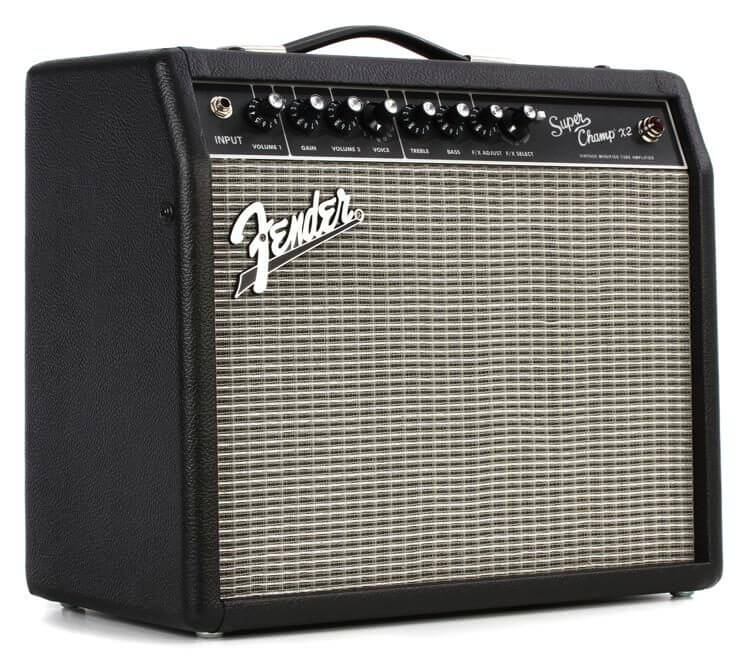
Starting from where we left at the pickups, amplifiers strengthen the electric signals. Making these guitars a lot more audible. One of the most common types of an amplifier is a tube amplifier. This type of amplifier uses vacuum tubes to increase the power and/or amplitude of the signal from an electric guitar. Whenever an electric current passes through these tubes, the current gets stronger. Or, in other words, you can say, the current gets amplified by a certain magnitude.
The pickup gets the signals and sends it to the amplifier with the help of a cord. There is a transformed inside an amplifier that uses electricity to transport the signal through various components such as tubes and capacitors to increase and control the signal respectively. The amplifier’s output connects to the speakers which vibrate on receiving the signal from an amplifier. The vibration of speakers creates sound waves in the air. So the rule of proportionality over here is that: The stronger the signal, the louder the voice is. Whenever a guitarist plays with this particular amplifier and speaker configuration, it can be loud enough for everyone present in a stadium to hear.
After introducing you to an electric guitar and its gears, it’s time to introduce you to types of the electric guitar.
What Are the Different Types of Electric Guitars?
Although the innovation is permanent and the new designs would always keep popping, here are a few of the standard types of electric guitar available today.
Solid Body Electric Guitar
Those guitars which have bodies, which are made from one solid piece of wood or several pieces of wood glued together are called solid body guitars. The current market scenario is such that solid-body guitars are the most preferred body type of guitarists. The wooden piece that is cut into a precise shape, one that of the electric guitar, is called a blank.
It is more common to have a solid-body guitar that is made of a few pieces of wood that are glued to each other because they are cheaper than the other. The concern here is of the waste that manufacturers have to undergo while making an electric guitar completely out of one wood instead of the comparison. The manufacturer makes a series of choices that determine the overall design of an electric guitar.
The Fender broadcaster was the first widely-available solid-body electric guitar that later evolved into Telecaster. Simplicity marked its entrance into the electric guitar making market. The basic design premise of the Telecaster continues on in every solid-body instrument to this day.
Some examples of unconventional solid-body looking guitars are the Gibson Flying V, Ibanez Destroyer, Dean ML, and Jackson Rhoads. They may look like there is something from another planet, but if you check their specs you’ll see they follow the same basic design principles as any other solid-body electric guitar. The solid-body electric guitars that you are going to explore in this guide are:
Stratocaster
If there exists an electric guitar that is used in a wide variety of genres and known to deliver excellent results in each one of those, it is the Stratocaster. Launched in 1954 by Fender, it is the most enduring and widely recognized model of electric guitar available. Country, rock, pop, folk, blues, and R & B, the Stratocaster has already given the perfect justice to each one of these genres.
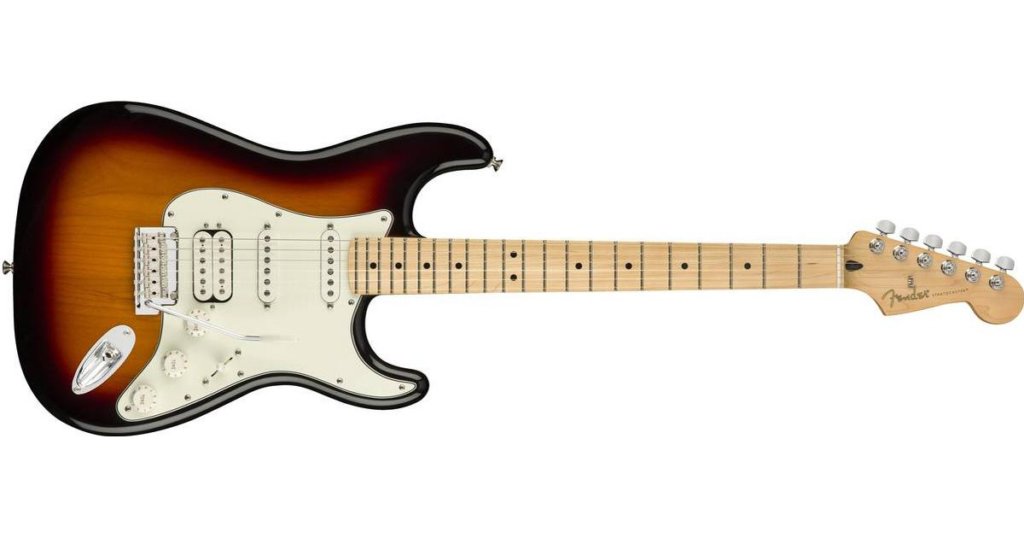
It is this quality of Stratocaster, aka Strat that makes it guitarist’s favorite one when it comes to choosing from other types of electric guitars. The problem with other types is they aren’t as compatible as Stratocaster is. They are good when it comes to providing tones in a particular genre, but not that compatible when used in another genre.
Stratocaster generally has a tremolo. A device that allows the player to change the pitch of a guitar. It does so by moving the arm up (raising pitch) or down (lowering pitch). Because the Stratocaster has been used in so many genres, it’s hard to associate it to a definitive Stratocaster tone. However, the guitar is generally considered to have a mid-range “quack”.
List of Notable Players who played the Stratocaster: Jimi Hendrix, Buddy Holly, Stevie Ray Vaughn, Eric Clapton, and David Gilmour.
The genre that suits Stratocaster the most: The Stratocaster is used in a variety of genres, but is best suited to playing the blues. The guitar sounds cleaner and has below low levels of gain. Its classic mid-range honk gives it a lyrical and cutting voice that is incredibly well suited to play the blues.
Super Strat
They are generally used for playing metal and hard rock. Super Strat was invented after the Stratocaster and that is the believed reason for the similarity between their bodies. However, compared to a Stratocaster, the Super Strat has pickups that have a higher output than a usual Stratocaster.

Similar to a Stratocaster, a Super Strat also has a tremolo that has greater tuning integrity than a Fender Stratocaster. The greater tuning integrity also means that there are more chances to get your guitar out of the tune. The tremolos used in a Super Strat are called Floyd Rose Tremolos. Unlike, Stratocaster, Super Strat doesn’t really have the same mid-range honk. The reason for this characteristic is credited to the fact that they generally utilize at least one humbucking pickup.
List of Notable Players who played the Stratocaster: Eddie Van Halen, Steve Vai, and Dave Murray.
The genre that suits Stratocaster the most: The Super Strat is best suited to rock and heavy metal.
Telecaster
Country music is the genre that can be played in a Telecaster the best way possible. It cannot be played in any other type of electric guitar. The history has it in its books that a Telecaster was the second electric guitar that was mass-produced. Manufactured by Fender, the Telecaster has a tone that is reflected in almost every track of the 80s. Though being attached to country music, Telecaster offers a wide range of tones.

Also, popular guitarists are known for using Telecaster in many genres. Wherein there was need of a guitar to have a strident mid-range and a glassy high-end response, it did well. This high-end response has actually led musicians outside of country music to use Telecaster instead of other electric guitars. For example, Jimmy Page actually used Telecaster on the final solo to Stairway to Heaven! Fender Baja Telecaster is also known to produce a hard metal tone when typically used.
List of Notable Players who played the Stratocaster: Keith Richards, Jack White, James Burton, Danny Gatton, Vince Gill, Jonny Greenwood, and Merle Haggard.
The genre that suits Stratocaster the most: Country music! Actually, a Telecaster is a great fit for any genre with the exception of harder varieties of rock. It has a very clear bold and cutting voice.
Les Paul
Les Paul is known to have a clear tone for any genre that it is used for. The classic example of this is given by its inventor, on whose, middle and last name, the name of the guitar is given, Gibson Les Paul. The guitarist used Les Paul type of electric guitar in his live shows as well as to do recordings. However, one particular genre of music that sticks out with this guitar is rock and roll.
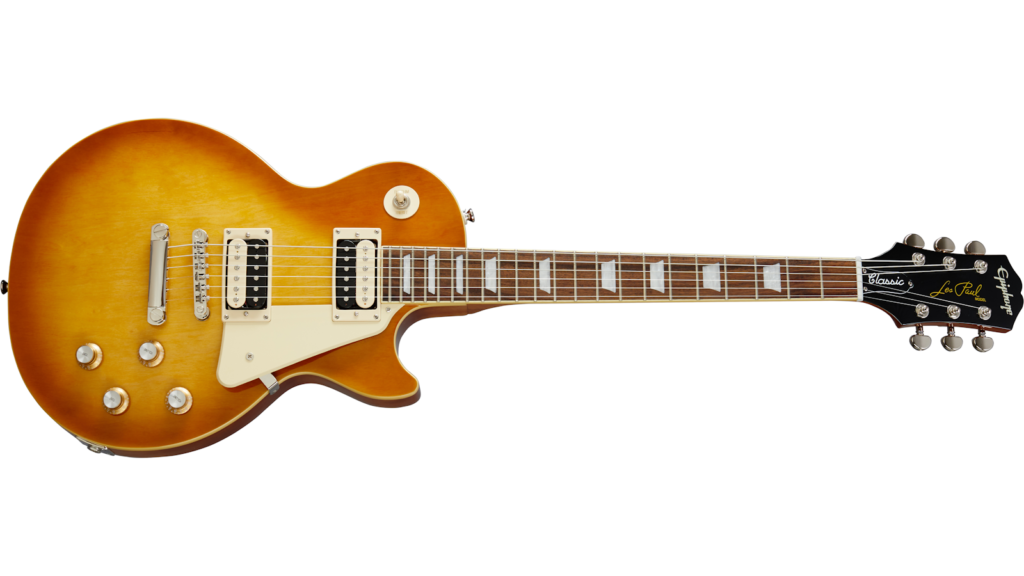
Gibson Les Paul was a jazz guitarist, who used a modified version of Les Paul guitar. Apart from Gibson Les Paul, Bob Marley, and in R &B as well as Reggae, Les Paul delivered excellent results. So like Stratocaster and the Telecaster, it is not possible to limit Les Paul to one particular genre and name it best suits for the same. Les Paul can deliver many clear tones. Very often, Les Paul pops up when talking about the balanced response and clear high-end.
More to Know:
Les Paul also has more sustain when compared to the other type of electric guitars on the list. In the past, the guitar got along with jazz, metal, R&B, countless varieties of rock, and even punk. The guitar is a definite workhorse, and for all those who are looking for a humbucker-equipped Les Paul is the name you can turn on to. Les Paul’s body style encompasses a few different designs: solid, solid-arched, and solid-chambered. Solid Les Pauls makes use of a solid piece of wood. With some having a significantly arched top and a maple cap. Whilst, chambered Les Pauls are arched, but the inside of the body is chambered, so there are a few cavities underneath the top of the body. The tonal differences between the three are minimal at best. Though chambered Les Pauls are significantly lighter than solid Les Pauls, they are also more expensive.
List of Notable Players who played the Stratocaster: Jimmy Page, Les Paul, Buckethead, Eric Clapton, Ace Frehley, Bob Marley, and Joe Walsh.
The genre that suits Stratocaster the most: Les Paul is an instrument that is good for just about everything. When in the right hands, Les Paul has proved to be that it can even be an excellent jazz guitar.
SG and Flying V
Both of these, SG and the Flying V come with two humbucker pickups. Not only they have that, but also on touching them, you start to found out similarities between the feelings of texture. However, they are different from each other in a way that many find the Flying V body style to be uncomfortable and awkward. Flying V does have significantly better upper neck access, which the SG doesn’t.
Tonally, these guitars are very similar to each other, both have a Gibson tone which makes them a good fit for rock and metal. SG and Flying V can cover as many as genres, as many as a traditional Les Paul can.
List of Notable Players who played the Stratocaster: Tony Iommi (SG), Derek Trucks (SG), Angus Young (SG), Albert King (Flying V), and Lonnie Mack (Flying V).
The genre that suits Stratocaster the most: Flying V and SG can produce great results in just about any genre except country music.
Semi-Hollow Electric Guitars
Those electric guitars which have an exposed opening, generally in the form of two F-holes on the top are called Semi-hollow electric guitars. A perfect example that depicts a semi-hollow electric guitar quality is Gibson ES-335.
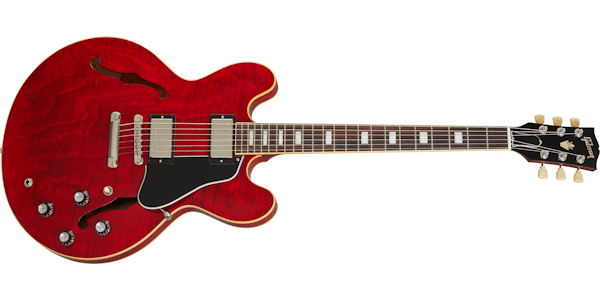
This type of electric guitars is highly very popular among famous names. For instance, Eric Clapton, Otis Rush, Warren Haynes, Dave Grohl, and B.B. King to play blues and jazz and also rock. The inner chamber of this guitar design breaks into two by a block of wood. This is present throughout the body. Also, semi-hollow guitars aren’t a single solid piece of wood. Hence, they have a tendency to feedback when players play them at louder volumes. Or, when used with high levels of distortion. As far as the tone of a semi-hollow electric guitar is concerned, they are very similar to solid-body electric guitars. The guitars do have a slight representation like an acoustic guitar.
Although people compare these with a solid-body guitar, they tend to have less sustain than solid body guitars.
Hollow Body Electric Guitars
Hollow body electric guitar is a term running parallel to the jazz guitars. However, unlike semi-hollow body electric guitars, the hollow body doesn’t even have a wooden block that runs throughout the body. Making them even hollower than the semi-hollow electric guitars. This also brings us to another difference between a semi-hollow and a hollow body electric guitar. That is the absence of the acoustic guitar like the tone in the former.
Hollow body electric guitars also have a tendency to feedback more than semi-hollow instruments. This makes these a poor fit for genres that require high levels of gain. Unlike semi-hollow guitars, hollow guitars encompass two main body styles: the ES-335 style and the jazz box style. While hollow body electric guitars suit jazz. There are a handful of cases where rock musicians got everyone’s attention playing fully hollow jazz box guitars in rock and roll.
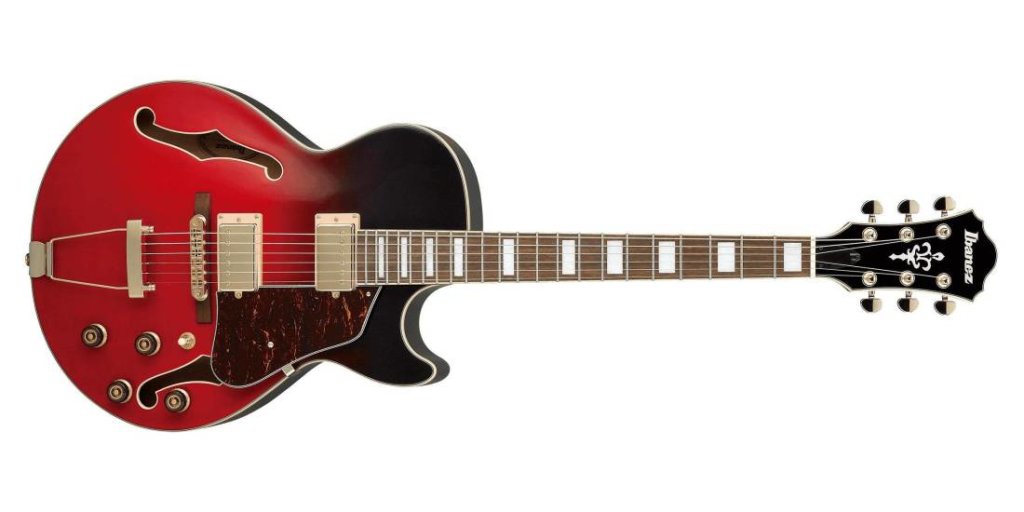
Chief among these rock musicians is Ted Nugent, who actually used the excess feedback produced by his Gibson Byrdland as a musical tool. Hollow ES-335 style guitars are used in blues and rock more frequently than what they are used in jazz box. Though because of the feedback they produce, most musicians tend not to go with this, but instead, stick with semi-hollow instruments.
Comparisons:
Solid-Body electric guitar versus Hollow Body electric guitar:
Hollow body guitars compare to the classic guitar tones and jazz music and tend to have a much more acoustic-type sound than compared to solid-body electric guitars. The downside to this is that — they can be susceptible to high levels of feedback, even at medium volume. Still, one of their main parts is that they’re very warm. They offer plenty of basses — which is very desirable despite their lower level of sustain.
Solid-body guitars have a reputation to offer a slightly longer sustain than hollow-body guitars. They’re known to be able to be amplified a lot louder without running into feedback issues. This is not it. Because of a solid body, electric guitars don’t rely on resonating chambers. Similar to hollow-body guitars, solid-body guitars rely largely on amplification. These are even a little more responsive to effects.
Hollow body electric guitar versus semi-hollow body electric guitar:
Hollow body guitars are primarily popular instruments for jazz and blues. They produce clear, soft tones.
Semi-hollow body guitars utilize a center block of wood. They are able to deal with increased gain Semi-hollow guitars suit rock and other modern genres.
The hollow body electric guitar falls short when you apply high volumes or gain. They are highly susceptible to feedback, although many guitarists have learned to use it in their favor. Legendary players George Benson and Chet Atkins favored the clarity and warm sound that these guitars produce. This also works nicely with slide techniques. Renowned alternative and progressive rock guitarists Geordie Walker and Steve Howe used them for sustained notes and ambient sections.
Commonly associated aspects of a semi-hollow guitar also include the Thinline body, single F-hole, and fixed stop bar or Bigsby Bridge. Essentially these guitars are sleeker and more ergonomic. This is perfect for all-action live guitarists or players after a balance between contemporary and classic design. One example of this would be Foo Fighters frontman, Dave Grohl. He never strays far from his Pelham Blue Gibson for those huge stadium rock tones.
Stratocaster versus Telecaster:
There is no question against how comfortable is it for one to hold a Stratocaster. Its soft angles, contours, and narrower body make it easy to carry and handle. But the Telecaster is easier to play and tune due to its simplicity.
Because the Stratocaster has its strings, which rests over the Tremolo system, balanced by the springs as the back of the guitar this creates a challenge when re-tuning your guitar to a different key as you have to re-tune each string a number of times. But with the tremolo, you get the subtle to extreme variations in pitch. Players like Jimi Hendrix and Jeff Beck set examples when expressing their creativity paying Tremolo. They did create their signature techniques in the process.
The advantage of using a Telecaster is that the strings are not on a Tremolo bridge. These actually go through the guitar which gives the strings for stability and resonance. So if you wanted to adapt tuning, you just need to tune down from your 6th string. You do not worry if the other strings go out of time. So the Tele is far easier to keep in tune allowing you to focus on playing. But maybe you love the Tremolo on the Strat to adjust your pitch and sound like Hendrix.
Telecaster versus Les Paul:
First off the easiest distinction to make between the two is sound. The Telecaster generally suits when playing clean. Whereas, Les Paul rocks well when playing distorted. Both are pretty much popular for a different range of styles from jazz to blues to rock to metal.
The Les Paul has a set neck made of maple or mahogany that gives it a more solid sound. Whilst, The Telecaster has a bolt-on maple neck, giving it a more twangy tone. One important thing to note here is that Les Paul also has a headstock angle and a neck angle. These contribute to the way the strings transfer tone into the body. Having those angles firmly anchors the strings in.
If you turn a Telecaster sideways you’ll notice everything is in a straight line. There’s no neck angle and there’s no headstock angle. This makes telecasters easier and cheaper to produce. The Les Paul has a shorter scale than the Telecaster, which impacts the overall tone. The shorter scale is more compressed, making it more articulate. The longer scale is more open, more dynamic.
The Conclusion
If you are already a professional level player, you might know that not only playability of a guitar player makes you a successful guitar player. However, the types of electric guitars do make a difference too. Acoustic, electric, solid body, hollow, semi-hollow, choosing the correct option matters a lot. The best selection would determine how nicely you will sound on the stage. Getting a wrong electric guitar will end you up ruining your career.
So, before buying your electric guitar, keep in mind the genre that you wish to progress in. Whether you require a little bit of acoustic tone or not! Depending on these small points you’ve got to figure out from different types of electric guitars. Either solid body, hollow or semi-hollow electric guitars, and then finally decide based on the tone of the electric guitar. Whether you wish to opt for a Stratocaster, Super Strat, Les Paul, Telecaster, Flying V, or any other. The article will help you make the right choice.

